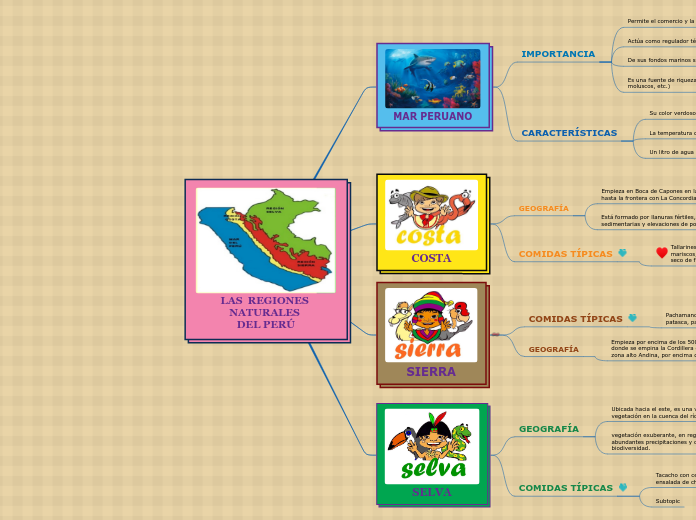von VIVIANA FERNANDEZ Vor 3 Jahren
816
LAS REGIONES NATURALES DEL PERÚ

von VIVIANA FERNANDEZ Vor 3 Jahren
816

Mehr dazu
'Six Thinking Hats' can help you to look at problems from different perspectives, but one at a time, to avoid confusion from too many angles crowding your thinking.
Using the Red Hat, you will use your intuition and emotions. Also, you will consider how others might look at the problem emotionally. Try to understand the responses of people who do not fully know your reasoning.
Subtopic
Using the Black Hat you consider the negative outcomes. Find what would not work and why. This way you highlight the weak points in a plan. Black Hat will help you to identify the flaws and risks before you embark on a course of action.
está formado por llanuras fértiles, colinas, cuencas sedimentarias y elevaciones de poca altitud.
Using the white thinking hat, you center your attention around the available data. Take the information that you have, analyze it, and see what you can learn from it. Become aware of your weak points and start working on improving your knowledge.